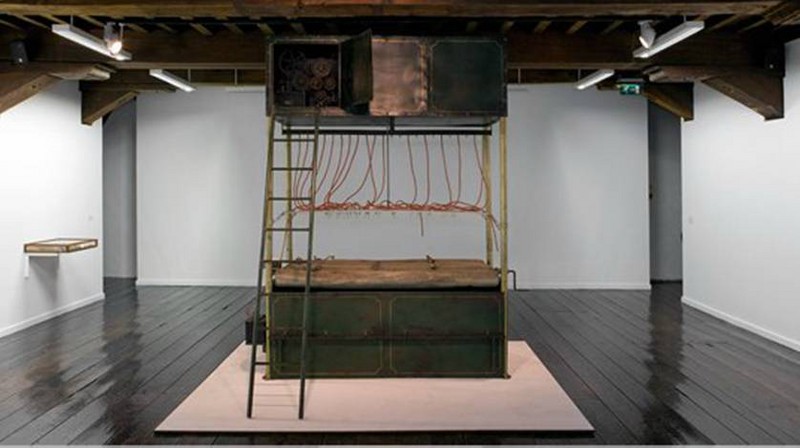He disappeared into complete silence
20 Sep - 04 Dec 2011
23 September - 4 December, .2011
In autumn 2011, De Hallen Haarlem presented the international group exhibition He disappeared into complete silence: rereading a single artwork by Louise Bourgeois. At the heart of this show lied a small but pivotal artwork He disappeared into complete silence (1947), by the French artist Louise Bourgeois. This booklet, containing nine etchings and nine parables, triggered Laurie Cluitmans and Arnisa Zeqo to conceive an exhibition, a publication and a series of nine events around it. For their proposal these two young art historians were awarded De Hallen Haarlem biennial ‘young curators’ grant’.
He disappeared into complete silence: rereading a single artwork by Louise Bourgeois was on show in the museum from 23 September to 4 December 2011.
This exhibition project grew out of the love that the two curators, Laurie Cluitmans and Arnisa Zeqo, found they shared for the work He disappeared into complete silence. After visiting − separately from one another –the exhibition devoted to Louise Bourgeois (1911-2010) in Paris in 2008, they both discovered that this specific work continued to haunt them. The relevance of He disappeared into complete silence to today’s world inspired them to formulate the question that is central to their project in De Hallen Haarlem: 'How can we take a single work as our point of departure for an exhibition and treat it as a selfcontained universe?' The exhibition makers Laurie Cluitmans and Arnisa Zeqo try to answer this question by ‘closely looking at the artwork and imagine it catapulted into the stars’.
Louise Bourgeois
He disappeared into complete silence is a key work in Bourgeois's oeuvre and marks the transition from her life in Paris to New York. The themes of the parables and etchings constantly recur in her later work and were frequently described by Bourgeois. In 2005 she made a new version of He disappeared into complete silence. Both versions were exhibited in the Netherlands for the first time.
In the universe that Louise Bourgeois creates in her booklet, the tragedy of everyday life is conveyed through lonely geometrical and architectural structures in the etchings and isolated figures in the parables. Endless loneliness is combined with unrelenting miscommunication, as absurdist as it is tragic-comic. The vanishing figure in the title He disappeared into complete silence evokes the end of a love affair or the death of a close relative. At the same time, ‘he’ also prompts associations with traumatic events such as the horrors of war and the disappearances of political activists.
The exhibition
In addition to the two versions of He disappeared into complete silence, the exhibition included works from Robert Barry, Zarina Bhimji, Alighiero e Boetti, Carol Bove, James Lee Byars, Antonia Carrara, Tacita Dean, Roni Horn, Zoe Leonard, Tala Madani, Rory Pilgrim, Pamela Rosenkranz, Francesco Vezzoli, Amanda Wasielewski, and from the collection of De Hallen Haarlem Charles Atlas, Sven Augustijnen, Tracey Emin, Paul McCarthy & Mike Kelley.
He disappeared into complete silence stood at the centre of a web of artworks depicting the themes of the etchings and parables: the vulnerability of human existence, the tragic side of everyday frustrations, urban malaise, failure, and loneliness. A theme that constantly recurs is miscommunication. The eighth parable, for instance, deals with a war veteran who loses his hearing and finds himself cut off from the surrounding world. In Johan - François (Aphasia), (2001-2003) Belgian artist Sven Augustijnen films two patients suffering from aphasia, a linguistic disorder caused by brain damage. While telling two different stories, both the parable and the film articulate the impossibility of communication and consequently human isolation.

